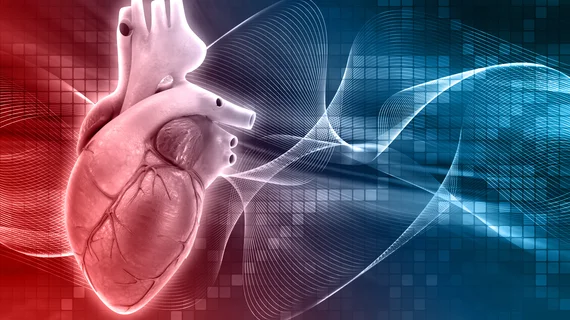3D neural network can help radiologists ID scarring associated with deadly heart condition
A newly created, three-dimensional neural network can better measure scarring in the muscular tissue of the heart, which is predictive of a deadly type of cardiac disease, according to a new multi-center study published in Radiology.
In fact, when tested on more than 1,000 patients, the 3D algorithm was faster and more accurate at quantifying myocardial scarring in patients with hypertrophic cardiomyopathy (HCM)—a “major” contributor to sudden cardiac death—compared to traditional two-dimensional approaches.
The boost in efficiency for measuring such scarring could make it easier for clinicians to overcome the time-consuming process of quantifying late gadolinium enhancement (LGE), a proven predictor of HCM, Ahmed S. Fahmy, with Beth Israel Deaconess Medical Center, and colleagues wrote.
“Robust and reproducible scar quantification could substantially improve adoption of LGE volume as a prognostic imaging marker in the clinical care of patients with HCM, particularly at low-volume centers or those with less experience in this area,” the researchers explained.
The Boston-based researchers teamed up with clinicians from Toronto General Hospital to retrospectively analyze LGE MRI data from 1,073 patients with HCM; all of that information was collected from seven institutions and three different vendors over a 10-year period.
The 3D algorithm measured myocardial scarring in only 15 seconds per image with an accuracy similar to an expert reader and better than 2D measurements. It identified patients with a large amount of scarring with an accuracy of 98%.
“Currently, there are no fully automated methods for HCM scar quantification,” Fahmy et al. wrote. They went on to add that their 3D neural network shows a “high capacity for learning complex HCM scar patterns from different imaging protocols and thus may fulfill the clinical need for accurate and standardized LGE analysis.”
The design of their algorithm, like most, is inherently biased toward the highest number of scar patterns in the dataset, but the team noted their approach has many advantages over the traditional 3D neural network, including less required memory, affording the technique a larger training and testing dataset.
With more testing, their algorithm can only improve, they wrote.

